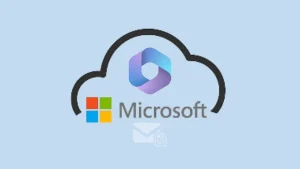Microsoft 365 or Exchange Online is currently ruling the email niche, and almost every organization prefers using it for enhanced productivity. Its advanced security features and flexibility are the two power points that will tilt the market towards Microsoft 365. Recently, Microsoft announced that they are disabling legacy authentication in Office 365 in early January 2025, due to which serval users are finding a way to block O365 legacy authentication.
In this write-up, we’ll dive deeper into Microsoft’s thinking behind turning off legacy authentication in Office 365 and how you can block legacy authentication.
Microsoft’s announcement to disable legacy Authentication Office 365
After COVID-19, Microsoft knew that the world was now officially in the digital age, and everyone was preferring Office 365 for collaboration and communication. To provide better security to their users, Microsoft brought up the idea of disabling legacy authentication in Office 365 and providing better security through modern authentication for their apps.
Since the announcement, Microsoft has released several updates for its apps, including modern authentication. Microsoft started by removing the basic authentication for random Office 365 tenants, and then, in October, Microsoft issued a final warning to users who are still using the basic authentication to upgrade their mailboxes with modern authentication.
Why Do users need to disable Legacy Authentication?
Legacy authentication has been in the market for a long time, but attackers or hackers have now found a way to breach it, making it prone to ransomware attacks.
In the technological world where everyone speaks and uses technology, Legacy authentication is the simplest authentication method that doesn’t even support multi-factor authentication.
Also, according to Microsoft, legacy authentication breaching statistics are increasing terrifyingly; about 99% of password spray and 97% of credentials stuffing attacks use legacy authentication. Hence, legacy authentication is a useless encryption method in today’s world.
Now you know the concept behind Modern authentication and why you should disable legacy authentication in Office 365. So, let’s move on to how you can block legacy authentication.
How do I block O365 legacy authentication?
There are several ways to block the Office 365 legacy authentication, but I’ve mentioned the conditional access policy below.
Conditional Access policy to block O365 legacy authentication
Step 1: Check that you have an Azure AD Premium 1 license
The only way to block the legacy authentication for your mailbox is that you must have an Azure AD Premium 1 license.
- Sign in to your Office 365 account.
- Go to the Azure Active Directory and click on the Overview.
- Verify whether you have an Azure AD Premium 1 license.
Step 2: New Conditional Access Policy
In step 2, you need to create a new conditional policy for your users to block them from using the legacy authentication. Apart from all users, you can create a policy for a specific group of people.
- Go to the Azure AD portal, then visit the Azure active directory home.
- Navigate to security, then go to Conditional access and click on the Policies.
- Following, click on Create a new policy.
Step 3: Name and assignments
Now, to create a new policy, you have to provide a name and assign an email address to block them from using the legacy authentication.
- Enter a name for the condition policy.
- To create assignments, click on Users and Groups> then choose Include and select users you want to block legacy authentication.
Step 4: Set Conditions
As the heading defines, in this step, you need to define the conditions for users.
- Go to conditions and then click on the Client apps.
- Now, under the client apps option, click on Yes.
- Following, select both mobile clients and desktop clients under the legacy authentication clients. Also, select Exchange ActiveSync clients and other clients.
- At last, click on the Done.
Step 5: Grant and Enable Policy
Once you are done with assigning assignments and creating a condition policy, you need to grant and enable it for users.
- Make a click on Grant.
- Under the control user access enforcement to block grant access option, click on the Block access.
- Now click on the Grant button to disable legacy authentication in Office 365.
So it is the process to block legacy authentication in Office 365, as we can see the process is quite complicated and organizations are recommended to pursue the process carefully.
Apart from this, if you want to migrate your data between Office 365 tenants or want to back up your Office 365 mailboxes before starting the block authentication process, use the Shoviv Office 365 migrator tool.
The tool is laced with several features and allows users to move data between Office 365 tenants and back up data in PST format in the most effortless manner. Several Microsoft MVPs and administrators suggest using this tool due to its user-friendly interface and required features. For a better evaluation, Download the tool’s free version now.
Conclusion:
Microsoft is slowly removing the legacy authentication for its products, and several Microsoft 365 users want to disable legacy authentication in Office 365. Legacy authentication is no longer safe from ransomware attacks and hackers, which has made implementing modern authentication a necessity for O365 users. We hope after reading this blog, you’ll be able to block legacy authentication and use modern authentication to keep your data safe. However, we recommend that you follow the process only if you’re good with technical commands or have IT teams. Also, to prevent data loss risk, you should use the Shoviv Office 365 migrator tool, which not only backs up Office 365 mailboxes but also allows users to migrate data between Office 365 tenants.
- How to Backup and Restore Emails in Webmail? - March 25, 2025
- How to Migrate Outlook to New Computer? - February 15, 2025
- Fix If Outlook Cannot Display the Specific Folder Location - February 1, 2025


